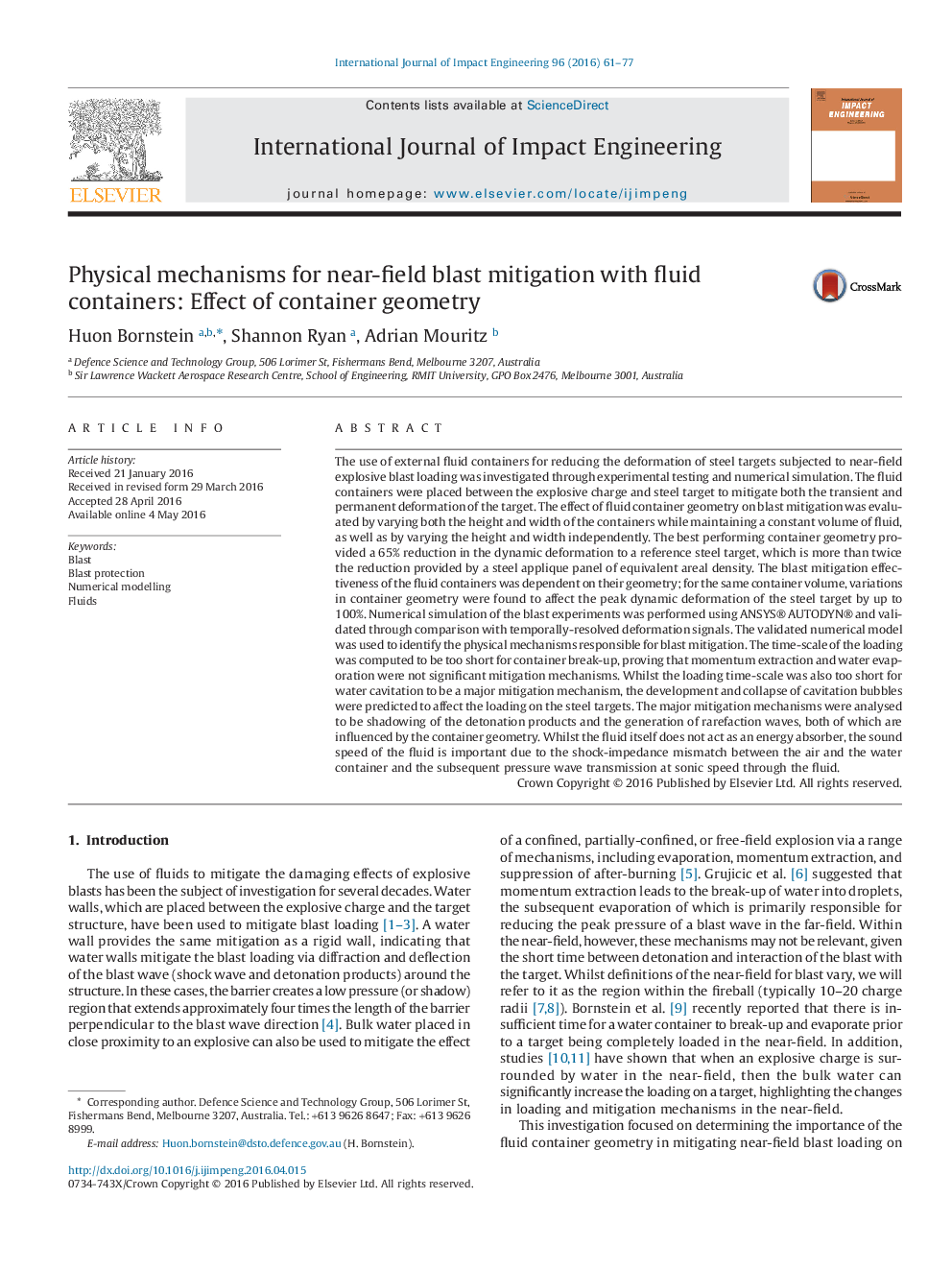| Article ID | Journal | Published Year | Pages | File Type |
|---|---|---|---|---|
| 776240 | International Journal of Impact Engineering | 2016 | 17 Pages |
•Experiments were conducted to assess the effect of fluid container geometry on mitigating near-field blast loading.•The best performing container provided an ~65% reduction in the peak dynamic deformation of a flat steel reference panel, which was twice the mitigation provided by a steel applique of equivalent areal density.•The geometry of the container had a significant impact on the mitigation provided.•Validated numerical simulations were used to identify shadowing and rarefaction waves as the key mitigation mechanisms.
The use of external fluid containers for reducing the deformation of steel targets subjected to near-field explosive blast loading was investigated through experimental testing and numerical simulation. The fluid containers were placed between the explosive charge and steel target to mitigate both the transient and permanent deformation of the target. The effect of fluid container geometry on blast mitigation was evaluated by varying both the height and width of the containers while maintaining a constant volume of fluid, as well as by varying the height and width independently. The best performing container geometry provided a 65% reduction in the dynamic deformation to a reference steel target, which is more than twice the reduction provided by a steel applique panel of equivalent areal density. The blast mitigation effectiveness of the fluid containers was dependent on their geometry; for the same container volume, variations in container geometry were found to affect the peak dynamic deformation of the steel target by up to 100%. Numerical simulation of the blast experiments was performed using ANSYS® AUTODYN® and validated through comparison with temporally-resolved deformation signals. The validated numerical model was used to identify the physical mechanisms responsible for blast mitigation. The time-scale of the loading was computed to be too short for container break-up, proving that momentum extraction and water evaporation were not significant mitigation mechanisms. Whilst the loading time-scale was also too short for water cavitation to be a major mitigation mechanism, the development and collapse of cavitation bubbles were predicted to affect the loading on the steel targets. The major mitigation mechanisms were analysed to be shadowing of the detonation products and the generation of rarefaction waves, both of which are influenced by the container geometry. Whilst the fluid itself does not act as an energy absorber, the sound speed of the fluid is important due to the shock-impedance mismatch between the air and the water container and the subsequent pressure wave transmission at sonic speed through the fluid.
